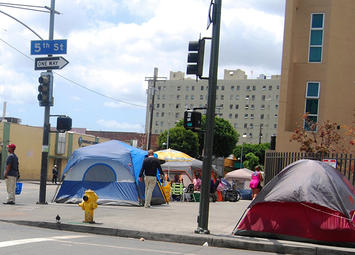
For many, Southern California is heaven on Earth. For urbanites, it’s a world-renowned capital of art, culture, and entertainment, and technology, rivaled by few locales across the globe. But even for those outside of the cities, the region boasts plenty of natural beauty: From the San Bernardino mountains, to the Joshua Tree desert, to the San Diego beaches, there’s an almost unmatched diversity of nature to experience. The weather is unparalleled, and the attractiveness of the region has led some 22 million people to call it home. Even with the rise of Silicon Valley, Los Angeles and Orange County account for nearly 40% of California’s economy, the 6th largest economy on the planet, more than twice the share of the Bay Area.
But the rising tide of the California economy has not, in fact, lifted all boats. As the Californian economy has expanded in recent years, growth has brought with it increases in the cost of living and widening income inequality.
A Real Cost Measure of Poverty
The official poverty rate in California, according to standards set by the U.S. Census Bureau, currently stands at 14.3%, just slightly ahead of the 12.7% national average. However, the Federal Poverty Line (FPL) is based on national cost-of-living averages, and fails to take into account the exorbitant cost of housing in the Golden State. A study conducted by United Way of California attempted to factor housing costs and produced a measure of California on a county-by-county basis. It showed some dismal findings for most Southern California counties. The problem here is simple: a cost of living more than double the national average, and mediocre income levels.
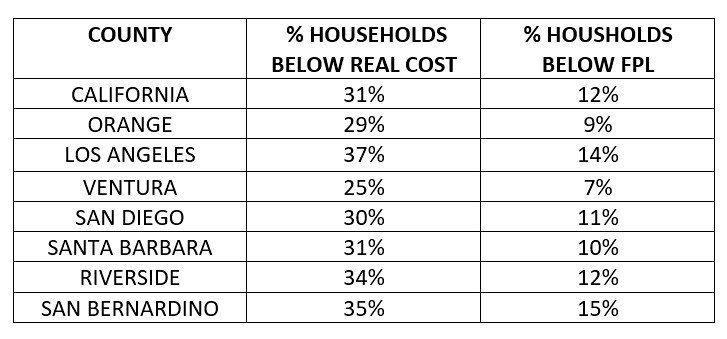
Overcrowding in Southern California
With an average rent well-above the national average, many Southern Californians have turned to cohabitation as a solution to financial stress. A study from the LA Times examined the nation’s over 30,000 ZIP codes to find the most overcrowded among them. Of the top 331 (1%) most overcrowded ZIP codes in the nation, an astonishing 134 (nearly half!) of them are found in Southern California, primarily in Greater Los Angeles and San Diego. Take a look at the concentration of overcrowded neighborhoods below:
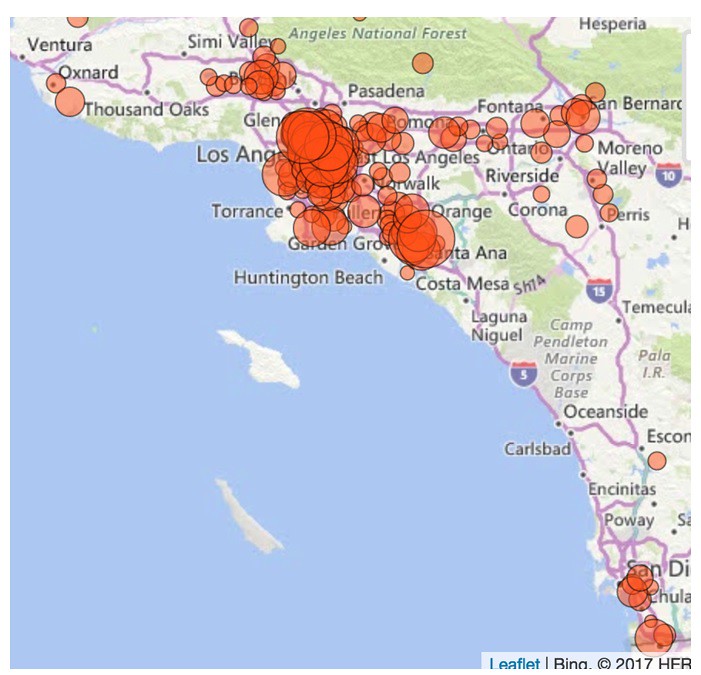
Figure 1: 134 of the most overcrowded ZIP codes are in Southern California.
Southern California contains more than triple the concentration of overcrowded ZIP codes found around the second-place region, New York City. Nearly one in six homes are considered “severely overcrowded,” with more than two people per room. According to Jason Mandell of United Way, "This is an example of poverty that can go unseen in our communities…It's easy to miss if you're not paying attention." Overcrowding has been found to be detrimental to child development by hurting tests scores and concretely impacting both physical and mental health, further lessening the chance that a child born into poverty will escape the cycle. However, living in these conditions is not a choice: In the words of Josefina Cano, a resident of one of most overcrowded neighborhoods of Los Angeles, “What can we do? It's better than being on the street." But what about those even less fortunate?
Homelessness in Southern California
It’s no secret that California is in the midst of a housing crisis, and skyrocketing rents across the state have sent many in search of greener pastures and cheaper homes. A study out of the Center for Continuing Study of the California Economy found that net domestic migration has been negative every year since 2000, with only natural births and immigration accounting for the overall population increase. However, for some of those that have remained, the American dream of home ownership is further away than ever, and, for others, even finding a place to call home is a struggle.
According to a 2017 HUD report, California has the largest homeless population in the United States, coming in at around 134,000 homeless individuals. California’s rate of homelessness is more than double the national average, and more than two in three homeless individuals live in the streets. Los Angeles County alone is home to over 57,000 homeless individuals, and some 3200 live on the streets of San Diego County. Anaheim, Santa Ana, and Costa Mesa are all hotspots of homelessness in Orange County, numbering over 4000, and even the Inland Empire has thousands of homeless individuals of its own.
The rising homeless population is costing Southern California municipalities an enormous amount of resources. A study out of the University of California at Irvine found that Orange County spends some $300 million in the form of services (public services, hospitals, etc.) to its homeless population each year, despite the fact that it would cost drastically less to place the entire homeless population of Orange County in permanent housing arrangements. In addition, San Diego recently underwent a massive public effort to eradicate an outbreak of Hepatitis A, which required spraying streets with a bleach solution, installing public washing stations, and administering over 100,000 vaccinations at a cost of $4 million to the public.
Several cities across California have declared states of emergency due to their homelessness issues, even in the wealthiest of municipalities. Clearly a collective, long-term solution is necessary to deal with the issue. But before solutions can be addressed, it’s critical to understand the root causes of the problem.
Causes of Poverty in Southern California
Housing, first and foremost, is the principle cause of financial distress in Southern California. The average price for a home in all of Southern California in July of 2017 stood at $500,000, nearly twice the level from just five years prior. The rapid rate of increase doesn’t seem to be slowing down either: According to the Case-Shiller index, considered to be one of the most accurate representations of home values, home prices in Southern California could climb 5% per year for the foreseeable future (compared to a 3% national average). More than a third of homeowners in Southern California already allocate more than 30% of their income on housing, along with nearly 50% of renters.
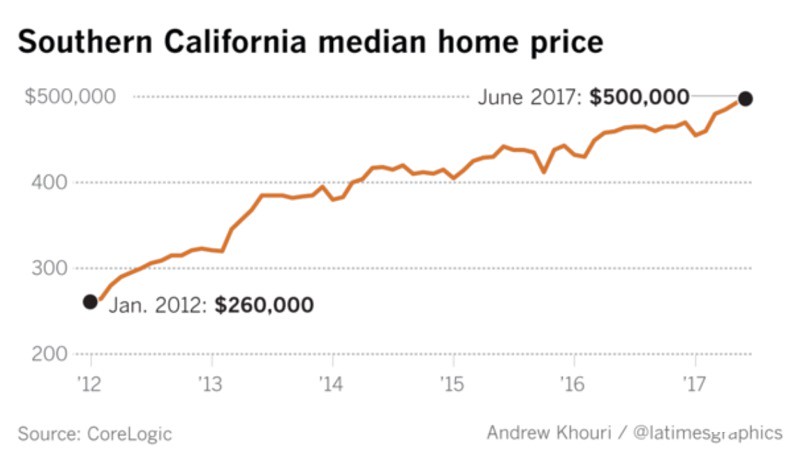
Figure 2: The median home price in Southern California has doubled since 2012.
To make matters worse, wage growth has paled in comparison to the increase in home prices. A 2016 study conducted by PolicyLink and the University of Southern California found that the Los Angeles region ranks 7th out of the 150 most unequal metros in the nation. As Southern California has grown since 1979, the highest-paid income earners have seen their incomes increase by 13%. However, the lowest-paid income earners have actually seen their wages decrease by 25% in the same time frame, even as the cost of living has gone up.
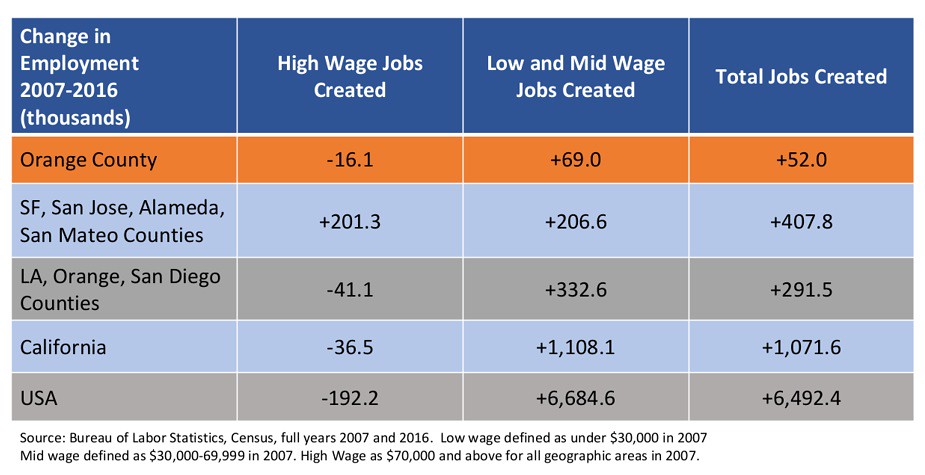
Figure 3: Southern California created over 291,000 jobs in the last decade.
Inequality in Southern California isn’t a product of overall job loss: in fact, the three largest SoCal counties added over 291,000 jobs between 2007 and 2016, despite actually losing some 41,000 jobs with incomes over $70,000/year in the same timeframe. However, the bulk of this growth was concentrated in low-income professions. One of the principal causes of this inequality is the loss of middle-income jobs, a phenomenon seen other portions of Coastal California as well. Los Angeles alone lost over a quarter of its jobs in the construction, manufacturing, and healthcare industries between 1990 and 2012. These industries typically require vocational training as opposed to a college degree, and with the rising costs of college, are more accessible to those on the lower rungs of the socioeconomic ladder. As middle-income jobs become automated or relocate offshore or out of state, lower-income Southern Californians face fewer opportunities for social mobility. The result is a more economically polarized Southern California, similar to trends observed in places like Silicon Valley, but with a smaller upside.
With high housing prices, a widening wage gap, and limited job opportunities that pay livable wages, the financial situation of millions of Southern Californians is precarious. A single job loss or prolonged illness could require a low-income family to cohabitate with other families, move out of state, or even be forced onto the streets. The cycle of poverty is becoming increasingly harder to escape, as social mobility in Southern California dwindles. The impetus is therefore on leaders in the worlds of policy, business, and communities to develop cohesive strategies to help the most financially vulnerable SoCal residents.
Alex Thomas is currently a junior at Chapman University pursuing a major in Political Science. He is originally from San Jose, California, before relocating to Orange County, and has worked extensively within both of the surrounding areas. He hopes to further his interest in public policy through continued study and community involvement in the upcoming years.
Photo: Via Los Angeles Wave, originally from Fifth Avenue Times.












